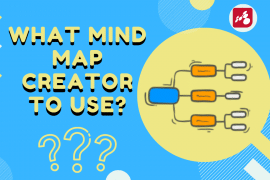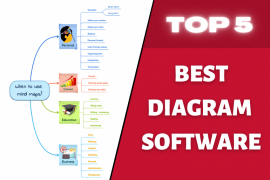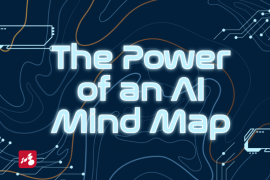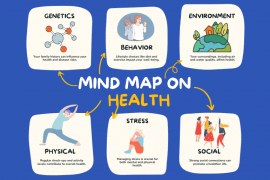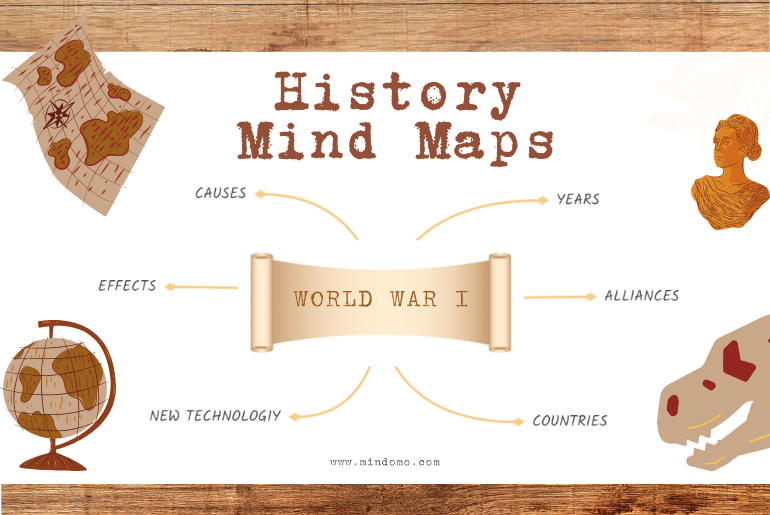
A history mind map is a tool used to organize historical events visually. The term mind mapping is based on the idea of Tony Buzan, who is credited with popularizing mind mapping. Tony Buzan delivered the idea that the brain is like a computer; it works more efficiently when information is organized in a non-linear way.
Mind maps are created by starting with a central topic, then adding related topics and sub-topics around it. This allows for a more efficient way of brainstorming or studying, as the brain can more easily make connections between items placed next to each other.
History mind maps can be used for various purposes, such as studying for an exam, writing a research paper, or simply organizing one’s thoughts on specific historical events. They can also be used to create event timelines, as all the information is laid out linearly.
Creating a mind map is a great way to organize and remember information visually, showing how creative mind maps can be used to learn about history effectively. With mind mapping software Mindomo, you can create your mind maps on any topic. So get creative and start mind mapping today!
Steps on how to create a history mind map
Step 1: Choose a central topic related to historical events that you wish to learn more about.
Step 2: Begin brainstorming related topics and sub-topics, and write these down around the central topic.
Step 3: Organize the topics in a way that makes sense to you, grouping similar topics together.
Step 4: Connect the topics with lines or arrows to show relationships between them.
Step 5: Add additional information, such as dates, names, and places, to the topics as needed.
History mind maps can be as simple or complex as you need them to be. They are flexible tools that can be adapted to fit any historical event. So get creative and start mapping out historical events today!
Examples of history mind maps
There are many different ways to create a mind map, but when it comes to historical topics, mind maps can be extremely helpful in visualizing and understanding complex information. Here are some history mind maps that can be a starting point for your research or study.
World war 1 mind map
This mind map provides a high-level overview of the first world war, including key dates, countries involved, and the main events of the conflict. Mind maps like this can be a helpful way to organize your thoughts and information when studying for exams or writing papers on historical topics.
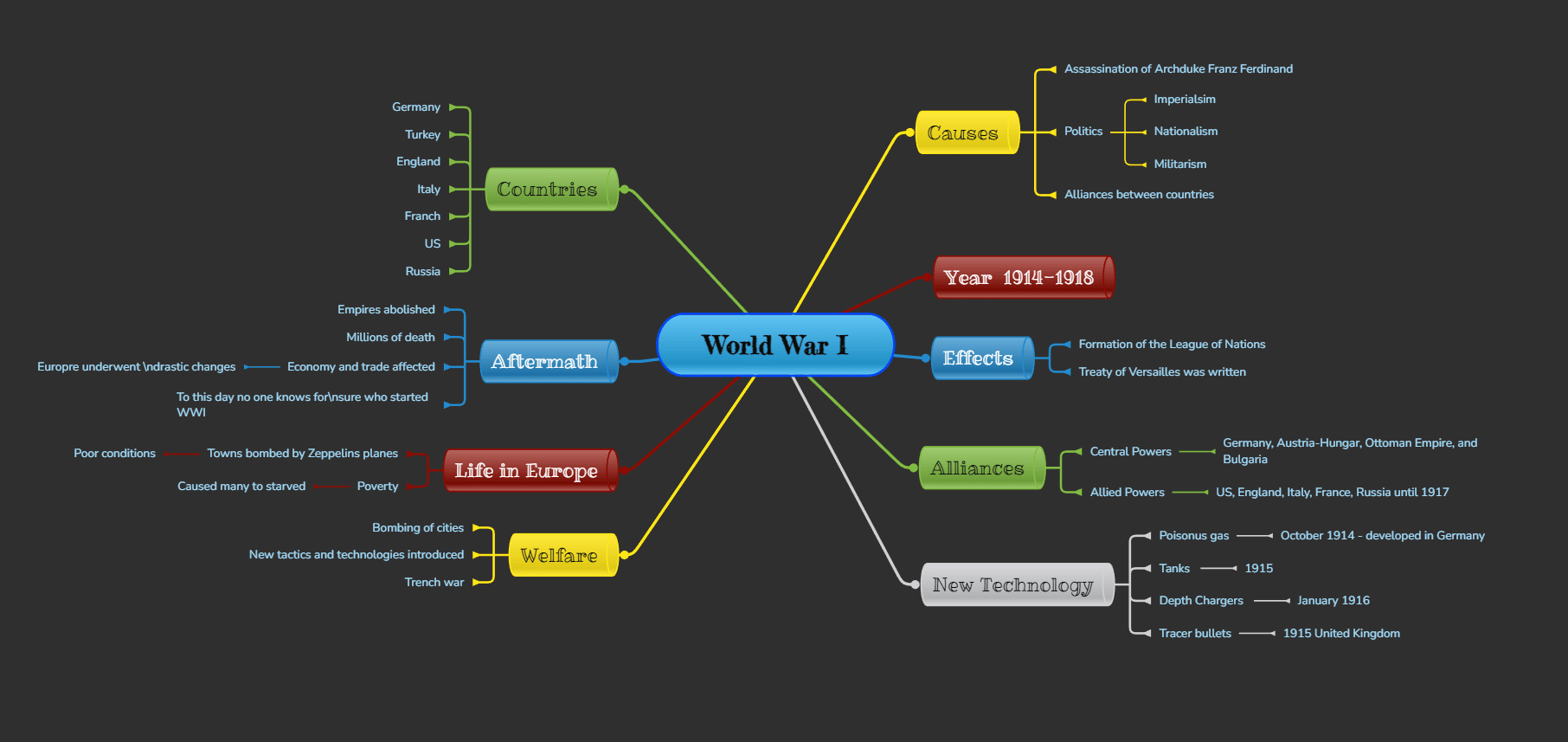
- The first world war was a global conflict that lasted from 1914 to 1918.
- More than 70 million military personnel, including 60 million Europeans, were mobilized in one of the world’s largest wars.
- Over 9 million soldiers and 7 million civilians were killed, making it one of the deadliest conflicts in human history.
You can use mind map templates from the Mindomo website to create a history mind map.
Ancient Egypt mind map
This mind map covers some of the most important aspects of Ancient Egyptian history, including the Pharaohs, pyramids, and mummies. It can be used as a starting point for further research or as a study aid when learning about this fascinating historical period.
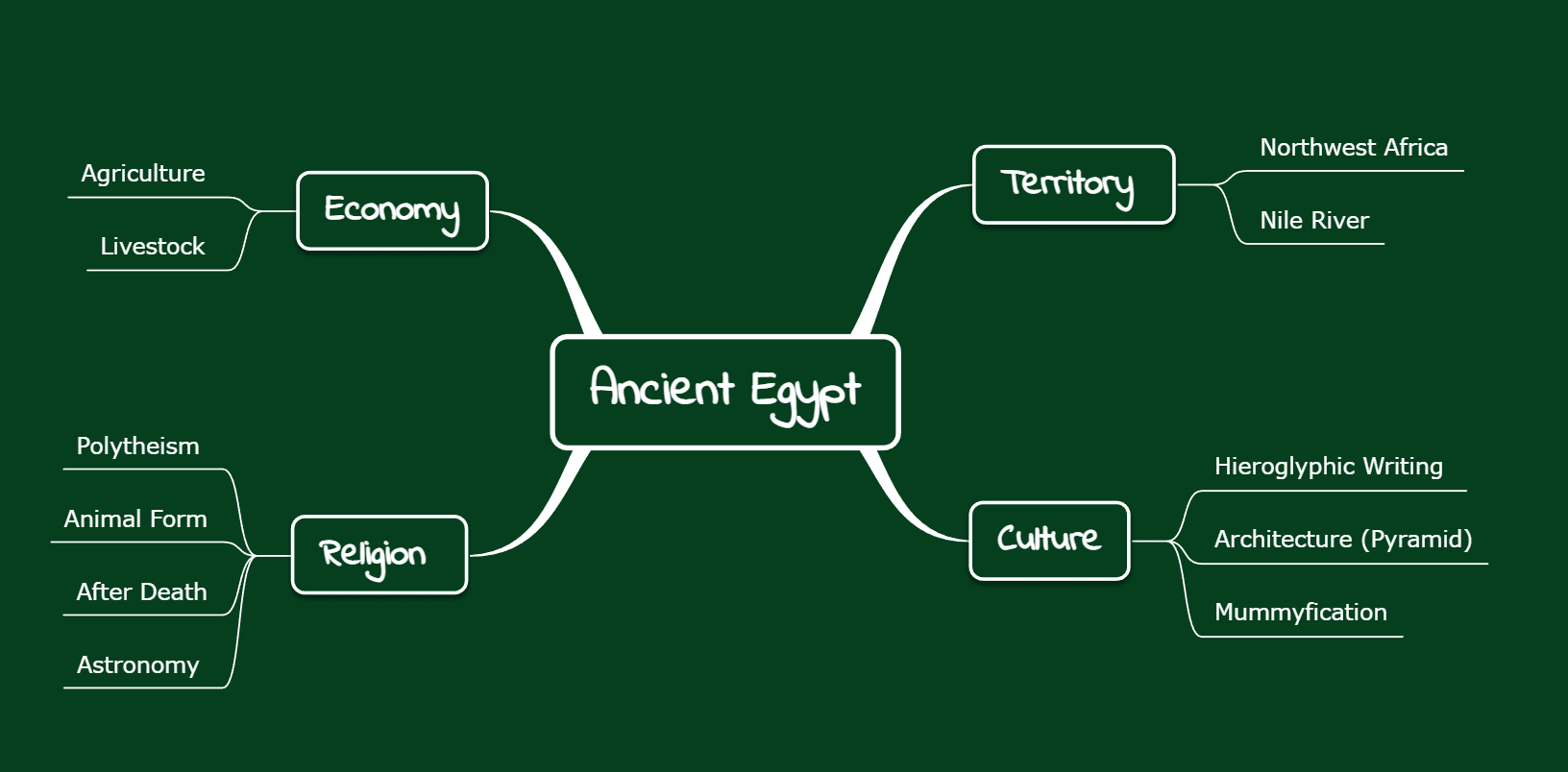
- The ancient Egyptians were one of the earliest civilizations in history, developing a complex society in the Nile River Valley by 3000 BC.
- The Egyptians built some of the most impressive monuments and structures in the ancient world, including the Great Pyramids of Giza and the Sphinx.
- They were also responsible for advances in medicine, mathematics, and astronomy, and their hieroglyphic writing system is one of the oldest writing systems.
To create a mind map like this, you can use our mind mapping software to create an Ancient Egypt template from the Mindomo website.
Difference between mind maps, concept maps
Mind maps and concept maps can be used to visualize information. Both tools can be used to organize ideas, but they have some key differences.
Mind maps are typically used as brainstorming tools or for generating new concepts. They are often more open-ended and allow for greater creativity.
On the other hand, concept maps are typically used to map out existing knowledge or concepts. They tend to be more structured and provide a way to see relationships between concepts.

Mind maps vs Concept maps – so, which one is right for you? It depends on your purpose. Both diagrams help you visually represent historical events. A mind map might be a good choice if you’re looking for a way to generate new ideas and conclusions and develop new perspectives.
A concept map might be better if you’re trying to understand complex information or see relationships between concepts. Concept mapping is more suitable for representing a large amount of knowledge or complex information.
Tony Buzan argued that concept maps are an effective way to learn because they help us to see relationships between ideas, making it easier to understand and remember new information. Da Vinci also used concept mapping to organize his thoughts and ideas.
Still not sure which one to use? Why not try both and see what works best for you?
Reasons why to use mind mapping for learning history
There are many reasons why mind mapping is a great tool for learning history. Here are just a few:
- Mind mapping can help you see the big picture. When studying history, it’s easy to get bogged down in the details and lose sight of the forest for the trees.
- Mind maps can help you step back and see the forest again by organizing information in a way that allows you to see relationships and patterns more easily.
- Mind mapping can help you remember information better. Because mind maps are visual, they can help you create mental hooks that make it easier to recall information later on. This is especially helpful when trying to remember many names and dates.
- Mind mapping can help you organize your thoughts. These diagrams can help you break it down into smaller, more manageable pieces if you’re struggling to make sense of a complicated historical event. This can make writing essays or taking exams on history much easier.
- Mind mapping is just plain fun! There’s no denying that creating a mind map is a lot more enjoyable than staring at a blank piece of paper (or Word document). And when learning is fun, you’re more likely to retain the information.
Perhaps you must create a study guide for an upcoming test or prepare a history course or project. Mind map presentation is a great solution.
History of mind mapping
The mind mapping technique has been around for centuries, but it wasn’t until the 1970s that it was given a name and began to be widely used. Tony Buzan, a British writer, and educational consultant are credited with coining the term “mind map” and popularizing the technique.
He wrote several books on the subject, including The Mind Map Book: How to Use Radiant Thinking to Maximize Your Brain’s Untapped Potential.
Buzan claimed that mind mapping could help people remember more information more easily, learn new information more quickly, and think more creatively. He also said that mind maps could be used for any thinking or problem-solving, from personal goal-setting to brainstorming ideas for a new business.
Since Buzan’s books were published, mind mapping has been adopted by students, teachers, businesses, and individuals worldwide. Now dozens of software programs are available that allow people to create mind maps online.
And there has been a growing body of research investigating the efficacy of mind mapping as a learning and thinking tool.
So if you’re looking for a way to boost your brainpower, mind mapping might be worth a try, and now there is mind mapping software available online to do it.
How to create a mind map with Mindomo?
Mindomo is a mind mapping and brainstorming software that lets you visually organize your ideas, projects, and plans. We think it makes mind mapping fun and easy!
With Mindomo, you can:
- Organize your ideas with mind maps
- Boost your productivity with to-do lists and task management
- Get organized with project management features
- Learn more efficiently with study tools
- Collaborate easily with team members, friends, and classmates
- Using Mindomo, you can create your mind map online. You can use it for free with a limited number of features or upgrade to a paid plan for more features and storage.
FAQs
What is a mind map?
A mind map is a tool that can be used to brainstorm ideas or generate new concepts. They are often more open-ended and allow for greater creativity.
What is a concept map?
A concept map is a tool that can be used to map out existing knowledge or concepts. They tend to be more structured and provide a way to see relationships between concepts.
Which one should I use?
It depends on your purpose. A mind map might be a good choice if you’re looking for a way to generate new ideas. A concept map might be better if you’re trying to understand complex information or see relationships between concepts.
How can mind maps and concept maps help me?
Mind maps and concept maps can be incredibly helpful in getting your ideas down on paper (or screen) in a way that’s easy to understand and remember. They can also help you better understand complex topics, make connections between related concepts, and find new ways to approach problems.
Keep it smart, simple, and creative!
The Mindomo Team

